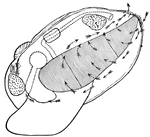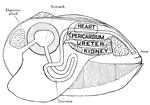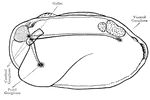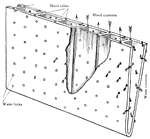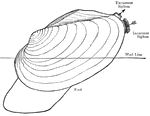Clipart tagged: ‘clams’

Iphigenia Brasiliensis - Sinupalliate Right Valve
"Having a sinuous pallial margin and consequent sinuous impression on the shell along the line of attachment…
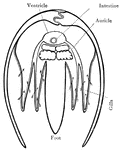
Clam
Cross section of the body of a clam, through the heart. Arrows indicate water current through the gills.
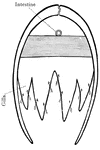
Clam
Cross section of the body of a clam, through the posterior adductor muscles. Arrows indicate water current…
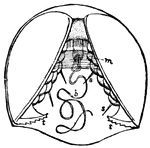
Clam
Young clam, still within the egg membrane. m, adductor muscle; t, hooks by which it attaches itself…
Razor Shell Clam
The razor shell clam has a shell somewhat resembling in shape and size the handle of a razor.

Piddock
A small mollusk. Burrows in soft rocks and is frequently killed by the cold when exposed during times…
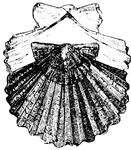
Scallop
Scallops are distinguished by the regular ribs of the shell, and by the two angular projections that…
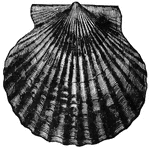
Scallop
Scallop; also known as the crusader's badge. While at rest the scallop lies on the bottom with its valves…
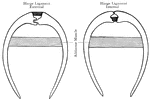
Clam Shell
Mechanism for opening and shutting a clam shell, note the internal and external hinge ligament..

